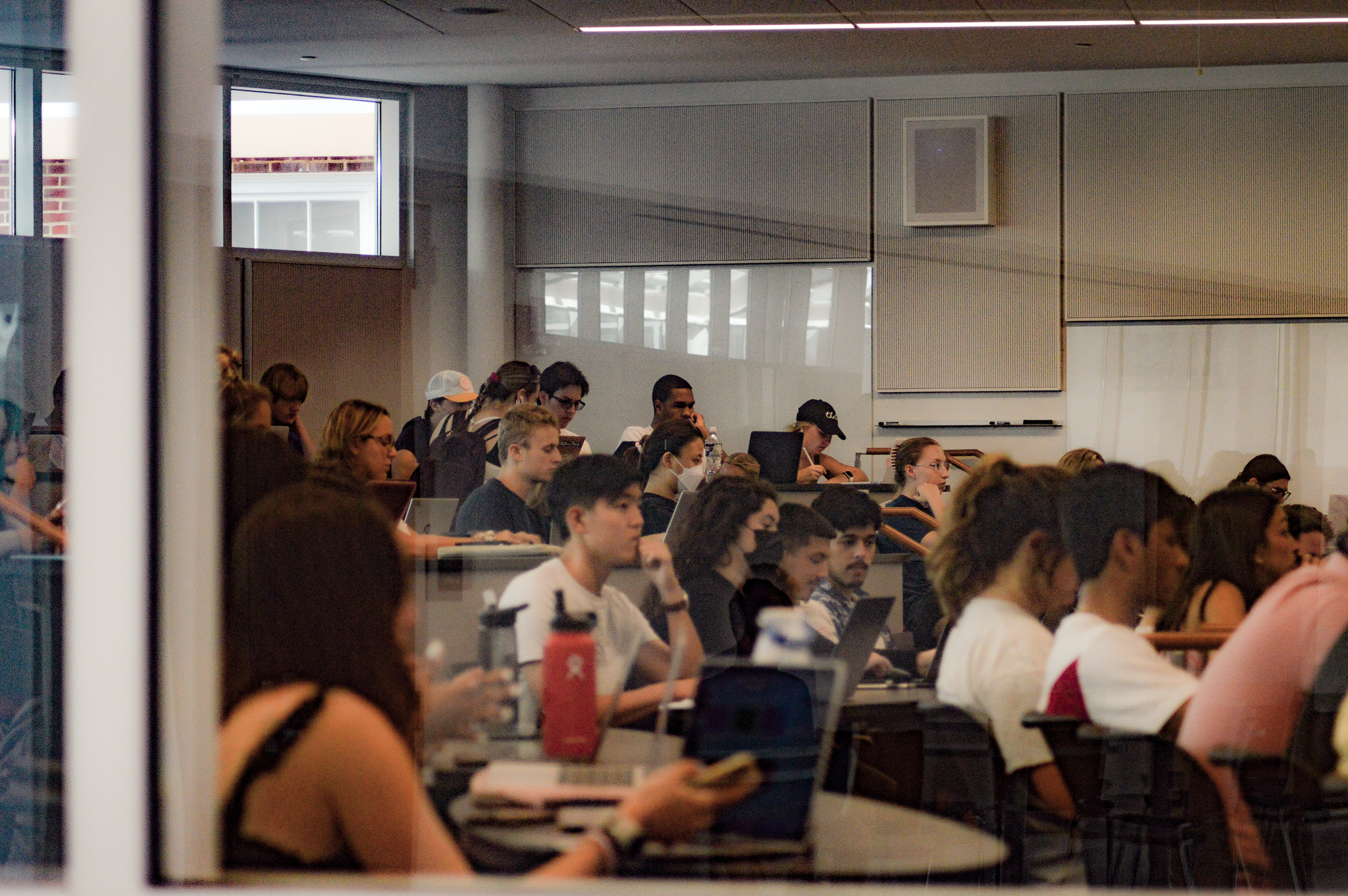Sam DiBella said he felt safer as a University of Maryland student last year because of the KN95 mask mandate in classrooms. The second year doctoral student in the information studies department said the timing of the new policy that made masking in classrooms optional, surprised him.
“Announcing this the Thursday or Friday before classes starts, felt more of a way to ensure that this would happen regardless of students, staff and faculty opinion rather than a responsible way of announcing this news,” DiBella said. “If they had given people time and if they had bothered to ask what students, staff and faculty thought about this, I don’t think that they would have rolled this [the policy] out like this.”
DiBella is one of some university employees who have voiced their disappointment with the university’s decision to remove its policy requiring students to wear KN95 masks in classrooms days before the start of the fall semester.
University Health Center director Spyridon Marinopoulos sent a university-wide email lifting the mask mandate on Aug. 24.
“Effective Monday, August 29, wearing a mask will not be required while indoors in most situations, including classrooms,” Marinopoulos said.
The email still recommended the campus community to wear KN95 masks for protection while indoors.
DiBella, the media chair of Fearless Student Employees, said the transition to not requiring masks in classrooms also shocked him because other universities in the area have not yet lifted their mask mandates.
The COVID-19 positivity rate in Maryland was 10.10 percent as of Thursday, according to the Maryland Health Department.
[PGCPS continues to grapple with teacher shortage]
Prince George’s County Public Schools reinstated its mask mandate for students and faculty Aug. 15, reversing a July decision to make masking in schools optional. However, Prince George’s County Public Schools CEO Monica Goldson abolished the reinstated mask mandate Sept. 6.
DiBella also said university employees, including students in graduate school serving as teaching assistants to earn a stipend, will suffer because of the university’s amended policy.
“If I stopped TAing, then I stop getting paid and I can’t do that,” he said. “At least for faculty and for grad students where if we’re to try and contest in our own classrooms or our own workspaces, this policy isn’t really possible because our jobs and our livelihoods would be at risk to do so.”
Other university faculty echoed that sentiment. Matthew Miller, an assistant professor in the Roshan Institute of Persian Studies, said the administration’s removal of a mask mandate scared him because of his at-risk family members who could suffer if they were to contract COVID-19.
Miller is the head of the finance committee of this university’s chapter of the American Association of University Professors. He said members of the chapter sent a survey to faculty to get a sense of how the majority of them feel about the policy change.
According to their research, among the 382 responses received, 67.8 percent said they would prefer a mask requirement in classrooms and 16 percent of participants said they would at least want masks to be implemented if requested by worried instructors or students.
“Ultimately … in this kind of blanket decision to remove all masking protections, there’s really not adequate concern given for what that means for vulnerable members of our community who have underlying health conditions,” Miller said.
Todd Holden, the president of local AFSCME 1072, which represents this university’s employees, gave a statement regarding how essential employees at this university feel about not having a masking requirement anywhere on campus.
[Despite stipend increases, UMD graduate assistants still struggle financially]
“As a democratic organization, AFSCME Local 1072’s members naturally have some diversity of opinion about ending masking requirements at this particular point in time,” Holden said. “In consideration of our workers with health concerns or Long COVID, of our workers with family members to be protected, and of our workers who quite simply cannot afford to get sick, management should recognize that the pandemic still presents risks that still must be addressed responsibly.”
Gabrielle Tillenburg, a first year doctoral student in the art history and archaeology department, said her asthma makes her more worried about the majority of students not wearing masks anymore, especially in large classrooms.
Tillenburg contracted COVID-19 twice during the past summer, which she said acted as a “wake-up call” to her that different strains can affect people, especially those with pre-existing medical conditions, differently.
She said most students not wearing masks in large lectures can make someone with severe health issues uncomfortable.
“So it’s about protecting others versus protecting yourself,” Tillenburg said. “And I think the policy that President Pines has put through is saying … ‘You’re in charge of protecting yourself, the university doesn’t hold responsibility for doing that.’”
Rob Patro, an associate professor in the computer science department, said this university is not the first to change its mask policy and other factors likely went into the decision, including external pressures.
“I don’t think that this is sort of some uniquely poor Maryland decision,” Patro said. “I think it’s a very widespread decision among many institutes of higher education and I think that peer pressure has probably contributed to the decision that was made.”



